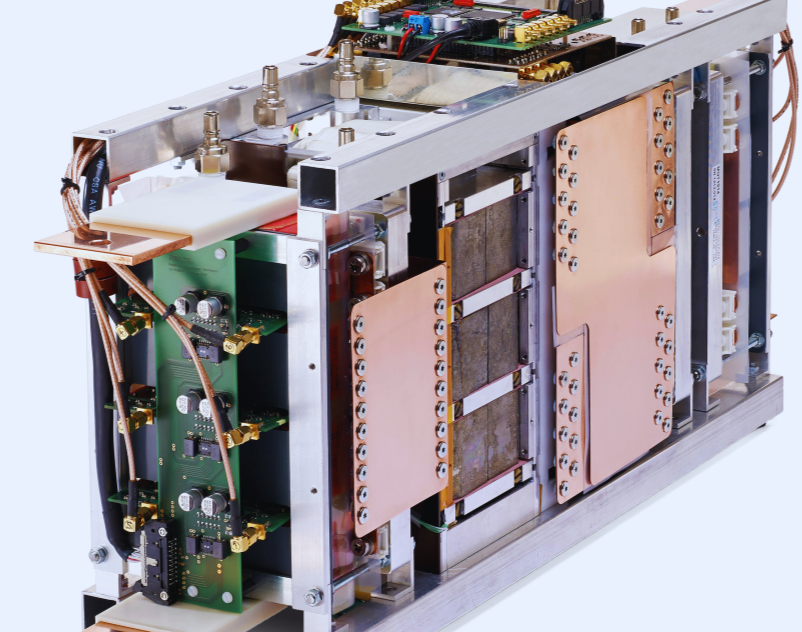Why Solid-State Transformers Are Replacing Traditional Ones
A Power Shift That Affects You More Than You Think
You might not realize it, but every time you flip a light switch, charge your phone, or plug in your car, you’re relying on a power grid that hasn’t changed much in over a century. Traditional transformers, the silent workhorses of the electrical system, have long served us well. But in today’s world—where energy demands are rapidly evolving and efficiency is no longer optional—they’re falling behind.
That’s where solid-state transformers (SSTs) come into the picture. These innovative devices aren’t just upgrades; they’re game-changers. As you move toward a future filled with electric vehicles, smart homes, and renewable energy, SSTs are reshaping how electricity is delivered to meet your needs. Let’s explore why this shift is happening and what it means for you.
Table of Contents
What Are Solid-State Transformers?
From Iron and Copper to Silicon and Control Boards
Traditional transformers operate on electromagnetic induction. They’re made of copper coils, iron cores, and operate passively. Solid-state transformers, on the other hand, use semiconductors and power electronics to actively manage electricity flow.
You can think of SSTs as the « smartphones » of the power world. They’re compact, intelligent, and multi-functional—a big leap from their « analog » predecessors.
Key Components of an SST
| Component | Function | Traditional Equivalent |
|---|---|---|
| Power Electronic Converter | Adjusts voltage and frequency in real-time | Not available |
| High-Frequency Transformer | Reduces bulk and increases efficiency | Large, iron-core coil |
| Control Unit | Enables remote monitoring and diagnostics | None |
These components allow SSTs to do more than just step up or down voltage. They actively communicate with the grid, allowing for more precise and flexible energy distribution.
Why Traditional Transformers Are Becoming Obsolete
Major Drawbacks
You may not notice their shortcomings until the lights flicker or bills go up, but traditional transformers are increasingly inefficient. Here’s why:
- One-way power flow: They only send energy in one direction
- Size and weight: They’re bulky and take up valuable space
- No real-time adaptability: Can’t react to sudden changes in load or voltage
- Inefficiency with renewables: Not suited for intermittent power from solar or wind
Environmental & Economic Limitations
Beyond performance issues, traditional systems also suffer from:
- High maintenance and repair costs
- Heat and energy losses during conversion
- Aging infrastructure that’s expensive to replace or upgrade
In an energy landscape that demands speed, efficiency, and intelligence, these drawbacks make traditional transformers look like relics.
The Key Advantages of Solid-State Transformers
Performance and Efficiency Gains
Switching to SSTs means you get:
- Greater efficiency: Up to 99% versus 90-95% for traditional units
- Bidirectional power flow: Energy can move in and out
- Support for DC and AC: Ideal for modern hybrid systems
- Faster response: Real-time voltage regulation
Smart Grid Integration
SSTs aren’t just transformers. They’re mini-computers that help build smarter, more responsive grids.
- Remote monitoring: You can track and optimize energy use
- Load balancing: Prevents outages and enhances reliability
- Seamless integration: Works well with renewables, batteries, and EVs
Size, Weight, and Safety
These compact devices offer more than just performance:
- Lightweight: Easy to install even in tight urban areas
- Safer: Less risk of fire or failure due to better cooling systems
- Flexible: Fits into existing systems with minimal modification
Comparison Table: Traditional vs. Solid-State Transformers
| Feature | Traditional Transformers | Solid-State Transformers |
| Size & Weight | Large, heavy | Compact, light |
| Efficiency | 90-95% | 98-99% |
| Power Flow | One-directional | Bi-directional |
| Integration | Limited | Smart grid ready |
| Maintenance | Frequent | Minimal |
Real-World Applications and Use Cases
EV Charging Stations
Your electric vehicle needs fast and efficient charging, and SSTs deliver just that.
- High-voltage DC support
- Two-way energy flow (vehicle-to-grid)
- Reduced charging time
Renewable Energy Systems
SSTs make it easier to use clean energy effectively:
- Stabilize input from solar/wind
- Enable energy storage integration
- Manage variable output with precision
Smart Cities and Industrial Use
As urban infrastructure becomes smarter, SSTs play a key role:
- Power management in high-density zones
- Fault detection to prevent blackouts
- Customized energy delivery for factories and buildings
Challenges and Limitations of SSTs Today
High Initial Costs
Yes, SSTs are expensive upfront. Their advanced semiconductors, cooling systems, and digital interfaces cost more to manufacture.
But you gain:
- Lower maintenance over time
- Longer service life
- Operational efficiency that pays off long-term
Technological Maturity
SSTs are still evolving:
- Thermal management is an ongoing challenge
- Scale-up limitations for large-grid deployment
- Standards and regulations are catching up slowly
These hurdles aren’t insurmountable, but they do slow adoption.
The Future of Power Distribution
Role in Smart Grids and IoT
Smart transformers will be core to your future energy needs:
- Real-time responsiveness to changing demand
- IoT-enabled sensors for diagnostics and control
- Predictive load management to cut costs and reduce waste
Integration with AI and Machine Learning
Imagine a system that not only delivers power but thinks about how best to do it:
- AI models to forecast load spikes
- Machine learning for fault prevention
- Data-driven efficiency strategies
You’re not just buying a transformer anymore. You’re investing in a smart system.
Conclusion: Embrace the Change
If your energy systems still depend on traditional transformers, it’s time to reconsider. Solid-state transformers aren’t just a better version—they’re a whole new way to handle power. As someone invested in reliable, sustainable, and future-ready energy, the switch makes perfect sense.
You’ll see lower energy bills, better performance, and seamless integration with the technologies that are shaping your life. The future of energy is intelligent, and solid-state transformers are already making it happen.
Frequently Asked Questions About Solid-State Transformers
What is a solid-state transformer and how does it work?
A solid-state transformer uses semiconductors and advanced electronics to manage voltage, current, and power flow digitally, offering more control and efficiency than traditional units.
Are solid-state transformers more efficient than traditional ones?
Absolutely. SSTs operate at up to 99% efficiency, compared to the 90-95% of traditional models.
Can SSTs replace all transformers?
Not immediately. While ideal for smart grids and renewables, SSTs still face cost and scaling challenges in broader grid infrastructure.
Why are SSTs better for renewables?
They manage fluctuating energy input, support storage systems, and offer fast switching capabilities—all crucial for solar and wind.
How long do solid-state transformers last?
They have fewer mechanical parts, so they’re expected to last longer, with less frequent maintenance compared to traditional units.


